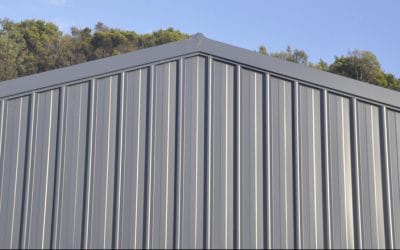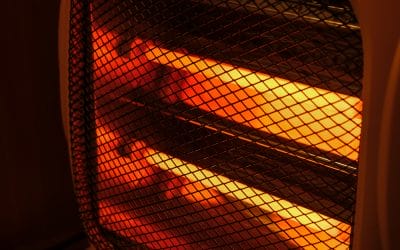Shed wind ratings explained
You might not think about the wind very much, except maybe when you are waiting for that afternoon breeze to cool things down. But when building a shed, the wind needs some careful thinking. In Australia, all buildings need to be constructed following the relevant standards and that includes sheds having the proper wind rating.
What is wind rating and why does it matter?
Wind rating is the classification of the wind forces that a structure, including a shed, is built to withstand. Wind rating is important for protecting your shed and its contents from strong winds. A shed not built to the correct wind rating is likely to have structural damage or failure when winds exceed its rating. A shed that is overpowered by the wind may release debris which can cause damage to other structures or endanger people’s lives. It will also not be safe to be inside during strong winds. In addition, it’s crucial for insurance because insurance companies will not pay out for wind damage to a structure, or the damage the debris could cause to your neighbours, if that structure was not built to the correct wind rating.
Then why not build every shed to the maximum rating? Designing a shed for higher ratings changes the design and increases the cost. For most people, building a cyclone proof shed in an area that doesn’t experience high wind speeds will be a waste of money. That’s why the wind codes are developed to provide a scientific and rational assessment of the wind forces that a shed will reasonably face and the appropriate shed design to match them. The factors and ratings described here are from the Australian Standard AS4055.
What factors determine wind rating?
There are four key factors that are assessed when determining the shed wind rating required. To get the wind rating required in your site these factors are combined according to the code to give an overall wind rating. These factors are:
- Geographic region: what zone in Australia you are building in.
- Terrain: the general density of wind blocking features in the surrounding area.
- Topography: the size of the hill that the shed is built on and the shed’s position on that hill.
- Shielding: Is the shed location next to large structures and trees that give a direct shielding effect?
1. Geographic region

The first factor in calculating the shed wind rating is the geographic region where you are planning to build. According to the standard, Australia is divided into four wind regions. These regions are based on how likely the area is to face cyclones and how severe those cyclones are likely to be. Region A is called ‘normal’ and has the lowest wind speeds. Region B is ‘intermediate’ and has higher risk of stronger winds. Region C is a ‘tropical cyclone’ region. The region with the highest wind speeds is region D, called ‘severe tropical cyclones’.
2. Terrain conditions

This factor takes into account the general conditions of the area surrounding the build site. Specifically, it takes into account how open and exposed to the wind the surrounding terrain is. If the shed is to be built on an open plain with few obstructions – or next to enclosed limited sized water surfaces – it will be exposed to the most severe winds and is referred to as Terrain Category 1 in the code. The most protected terrain type is Terrain Category 3. This is when the shed site is surrounded by fairly dense wind obstructions. To be in this most protected category there needs to be at least 10 house sized obstructions per hectare in the surrounding area.
3. Topography

This factor takes into account the steepness of the hill that the shed will be positioned on and what part of the hill it is on. In general, the steeper the hill is, the greater the wind force. It is also true that the higher up the hill – on the windward side – a shed is, the greater the wind force against it will be. Overall, a shed built on very flat terrain or on the lowest third of a hill, will be subject to the lowest wind forces. The topography which leads to the greatest wind force experienced is on the top third of a very steep hill or cliff with a height greater than 30 metres.
4. Shielding

This factor considers the protection given by objects that are immediately surrounding the shed. According to the standard, a particular site is regarded as having Full Shielding, Partial Shielding, or No Shielding. Full shielding is when there are at least two rows of similar sized structures surrounding the shed. It is also considered Full Shielding if there are heavily wooded areas within 100m if the site is in the ‘normal’ or ‘intermediate’ geographical regions. This is typical of suburban sites. Partial Shielding is when there are at least 2.5 obstructions per hectare and there is direct protection provided by some of those obstructions. If there are no obstructions protecting the site then it is regarded as No Shielding.
Build your shed with experts
As you can see, shed wind rating is extremely important and not so simple a matter. It’s important to get it right in order to protect your shed, have it insured, and to be on the right side of the law while keeping people safe.
Get it done right and build with experienced shed builders at Spinifex Sheds. We will design and build you a custom shed that adds value to your property and meets all of the relevant Australian standards and codes. We offer a huge range of sheds including rural sheds and farm sheds in Perth and regional areas. Contact us today for a quote or information on our metro and regional custom shed builds.
Similar Articles
Can You Build a Shed on a Slope? | Solutions, Permits, Cost & More
Today we explore the challenges of building sheds on slopes, what solutions are available, the permits required, and finally what costs you might expect.
Sliding Doors vs Roller Doors | Which Type of Shed Door Should You Get?
Today we will compare two popular types of shed doors, sliding doors and roller doors. Discover their advantages and which type best suits your needs.
Best Way to Heat a Shed | Discover Your Options
Today we are going to explore the best way to heat a shed in winter, highlighting the best options available on the market and their pros and cons. Discover what the best heater for your shed is and pay attention to the important safety tips and advice outlined in...






